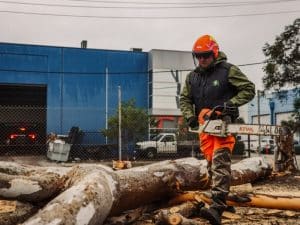Acacia trees are a staple in many Australian gardens and landscapes, known for their unique foliage and vibrant flowers. However, like all trees, acacias are susceptible to pest infestations, particularly when stressed or dying. If you’ve noticed your acacia tree looking a bit under the weather, it might be time to look into what pests could be causing the issue. This article will discuss common pests that target dying acacia trees, how to spot signs of an infestation, and ways to manage and prevent these pests.
What Are Acacia Tree Pests?
Acacia trees, like many other native plants, are susceptible to a variety of pests that can cause significant damage. These pests not only harm the tree but can also have broader ecological consequences. In Victoria, where biodiversity is a key concern, pests and weeds can disrupt local ecosystems and impact native species. The impact of weeds and pests on Victorian biodiversity is a growing issue, as invasive species often outcompete native plants and threaten local wildlife that depend on them for habitat and food sources.
When dealing with acacia tree pests, it’s essential to recognise the signs early. A well-maintained acacia tree has a better chance of fighting off these pests, but when it’s in decline, the pests can cause significant damage.
Which Pests Affect Specific Parts of a Dying Acacia Tree?
Different pests tend to target specific parts of the acacia tree. Understanding this can help you identify the pest more accurately based on the symptoms you observe.
| Pest Name | Targeted Tree Part | Damage Caused | Common Signs |
| Acacia Leaf Beetle | Leaves | Defoliation, leaf skeletonising | Chewed leaves, reduced canopy |
| Aphids | Leaves and stems | Sap-sucking, leaf curl, and honeydew production | Sticky residue, ants, black sooty mould |
| Gall Wasps | Branches and leaves | Tissue swelling, gall formation | Round bumps or growths on stems/leaves |
| Scale Insects | Branches, stems, and leaves | Sap loss, weakening, sooty mould | Hard shell-like bumps, yellowing leaves |
| Termites | Trunk and internal wood | Wood hollowing, structural weakening | Brittle wood, mud tubes |
| Tree Borers | Trunk and branches | Internal tunnelling, sap leakage | Tiny holes, frass (wood dust) |
What Are the Signs of Acacia Tree Pest Infestations?
When pests attack your acacia tree, there are a few key signs to look out for. These can help you spot an infestation early and take appropriate action before the damage becomes irreversible.
- Discolouration and Wilting: If the leaves turn yellow or brown and wilt, this could be a sign of pest activity. Aphids and scale insects are common culprits.
- Defoliation: A sudden loss of leaves or chewed-up edges may indicate a beetle infestation, especially the acacia leaf beetle.
- Presence of Galls or Bumps: Gall wasps leave behind visible galls on the branches and leaves. These growths are often a clear indicator that something is wrong.
- Sticky Residue: A sticky, shiny substance on the leaves or trunk is often caused by aphids or scale insects. This honeydew can also attract ants.
- Holes in the Tree: If you notice small holes or tunnels in the trunk, it could be a sign of tree borers or termites.
- Sooty Mould: This black mould grows in the honeydew left by aphids or scale insects. It can further stress the tree and inhibit photosynthesis.
How Can You Manage and Control Acacia Tree Pests?
Managing pest infestations in acacia trees requires a combination of preventative measures and treatments. Here’s how you can control and manage pests effectively:
- Prune Infected Branches: To reduce the pest population, start by removing any heavily infested branches or leaves. Always ensure you use sterilised pruning tools to prevent the pests from spreading.
- Use Insecticidal Soap or Neem Oil: These natural treatments can help control pests like aphids and scale insects without harming the environment or beneficial insects. Apply during the cooler parts of the day to avoid burning the tree.
- Encourage Beneficial Insects: Natural predators such as ladybugs and lacewings are excellent at controlling aphids and other small pests. You can attract these insects by planting native flowering plants nearby.
- Insecticides: In severe cases, a targeted insecticide might be necessary. Always follow the instructions and use chemicals that are safe for the environment and the tree.
- Install Physical Barriers: For larger pests like termites or tree borers, consider installing barriers such as tree wraps to prevent pests from gaining access.
However, if the pest damage is extensive and the tree is beyond saving, removal services for acacia trees damaged by pests may be the best course of action. Qualified arborists can assess the situation, provide safe tree removal, and even manage stump grinding to ensure your property is free from hazards and pests.
How Can You Prevent Future Infestations of Acacia Tree Pests?
Prevention is always better than a cure. To keep your acacia trees healthy and pest-free, here are some helpful tips:
- Regular Tree Maintenance: Water, mulch, and prune your acacia trees regularly to keep them in good health and less likely to be harmed by pests.
- Avoid Overwatering: Pests like aphids thrive in humid environments. Ensure your trees are not overwatered, as this can create a perfect breeding ground for pests.
- Soil Health: Healthy soil can improve the overall strength and immunity of your trees. Consider conducting soil tests and amending the soil to provide necessary nutrients.
- Monitor Trees Regularly: Keep a close eye on your trees for the initial indications of pests. Identifying infestations in their early stages can prevent substantial harm to the tree.
- Use Resistant Varieties: Some varieties of acacia are more resistant to pests. Consult an expert before planting to ensure you select the best variety for your location.
Conclusion
If your acacia tree is struggling with pests or simply needs a little TLC, The Yard’s team of qualified arborists is here to help. We provide expert tree removal, stump grinding, and pruning services to keep your trees in top shape. If you need assistance, learn how The Yard can help with your trees.



